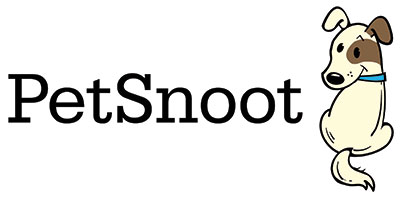What does noise anxiety look like? It’s like when your dog hears thunder, starts barking and trembling; clinging to you like a magnet until the noise goes away. Noise anxiety, also known as noise aversion, can be caused by tons of different noises from something as common as a doorbell to the occasional crack of fireworks.
An estimated 2 out of 3 dogs in the United States are affected by noise anxiety. Did you know this is a medical condition that can and should be treated? It’s important to understand that dogs experiencing noise aversion are similar to a person having an anxiety attack.
When left untreated, noise aversion likely worsens and can progress to fear of multiple types of noises, possibly leading to destructive behavior.
Why does this happen?
Some breeds of dogs are naturally predisposed to noise aversion. This happens most often with herding dogs as well as some working dogs.
A traumatic or stressful event can cause a dog to become nervous around different sounds. Poor socialization and maternal stress during pregnancy are also factors that could cause noise anxiety.
Signs of noise aversion can include:
- Lip licking
- Yawning
- Lifting a forelimb
- Whining or barking
- Freezing
- Panting
- Hiding
- Trembling
- Pacing
- Trying to escape
- Attention seeking or unusual clinginess
- Inappropriate elimination
Noises that trigger anxiety can include:
- Thunder
- Fireworks
- Sirens and other street noises
- Indoor or outdoor construction
- Doorbells
- Lawn mowers and/or other yard tools
- Vacuum cleaners
- Garbage trucks or snow plows
- Sporting events on tv or at a local stadium
- Smoke detectors
- Electronic noises (i.e. microwave or cell phone)
What are some possible treatments?
Once a pet is diagnosed with noise aversion, treatment typically includes a combination of environmental management, behavior modification, and medication.
Changing their environment:
In order to manage their environment, it is recommended you create a safe space for your dog to get away from the noise. A few ideas for environmental management include closing the blinds, playing music or turning on the television, moving to an inner room with better isolation from outside sounds, or distraction by playing with their favorite toy. While our natural instinct may be to coddle or console the dog when it’s afraid, this added drama exacerbates the situation.
Behavior modification:
Using positive reinforcement, such as a food treat, to encourage positive emotional responses to sounds that induce fear can help modify their behavior. This type of training should be done under the direction of a veterinarian or qualified animal behaviorist. If done incorrectly, it can result in an increase of fear and anxiety.
Therapeutic products and medications:
Natural pheromone products, such as Adaptil Calm, can be beneficial. These products contain a dog-appeasing pheromone that provides a strong signal of security and comfort. There are also wraps and anxiety shirts that have become increasingly popular. These wearable products are based on the belief that applying consistent pressure to certain parts of the body helps trigger a rest and relaxation response.
For many dogs, prescription medications are most effective in treating noise anxiety. There are several different types of prescription medications that can be administered. Your veterinarian will determine if a medication with a rapid onset of action that lasts for a few hours will suffice, or if medications that have a more long acting effect will work better.
Take your answers to this quiz to your veterinarian to help them determine the best course of action. Click here to begin.
Whether your dog suffers from noise anxiety continuously or just a couple times a year, it is important to seek treatment to help end the suffering. Available treatments not only improve your dog’s quality of life, but can also give you peace of mind to know you have the proper tools to help when these anxious situations occur.
Does your dog suffer from noise anxiety? We’d love to hear about your experience with any treatments, products, medications, etc.


Recent Blog Comments